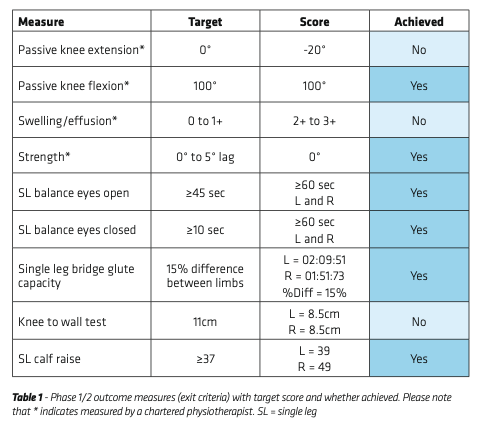FROM NON-LEAGUE TO THE PREMIER LEAGUE AND BACK AGAIN: USING LESSONS LEARNT TO INFORM AN ACLR REHABILITATION CASE STUDY – PART ONE

Mark Armitage, School of Health and Sports Sciences, University of Suffolk
Introduction
Anterior cruciate ligament (ACL) ruptures are one of the most common and impactful sports injuries, with surgical reconstruction remaining standard for those wanting to return to high function (1,2). Despite such procedures, less than half will return to sport within the first or second year depending on performance level (1,3), with 25% likely to reinjure and 50% expected to develop significant clinical osteoarthritis in later years (1). Furthermore, those who do return are not guaranteed to achieve the same performance levels or be able to maintain them for a sustained period of time (4). Currently, there is no consensus regarding optimal rehabilitation (1,5), with long- term outcomes for ACL injuries remaining largely unsatisfactory (6). There is growing agreement that rehabilitation progressions should be criteria-based and not just time dependant (4,7). However, it may be prudent not to rush return to play (RTP) until at least nine months post-surgery, depending on personal circumstance and medical provision (8,9). Indeed, returning to cutting and pivoting sports (i.e. football) within nine months of surgery has been associated with a seven-fold increase in the chance of sustaining a second ACL injury (9). Age would also appear to be a risk factor of reinjury, with research suggesting that those aged under 25 years have around a one in four chance of graft rupture or contralateral ACL injury within the first few years of return (2). Whilst evidence suggests that younger people might be at a higher risk of reinjury following RTP, age itself perhaps isn’t the determining factor but rather that those in this category are more likely to return to sport in greater numbers (10) and engage in sports which could be described as high impact (8). Therefore, a greater emphasis should be placed on RTP protocols and criteria as this can reduce the incidence of reinjury by up to 92% (8).



